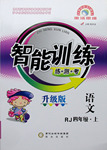题目内容
The human nose has given to the languages of the world many interesting expressions. Of course, this is not surprising. Without the nose, we could not breathe or smell. It is the part of the face that gives a person special character. Cyrano de Bergerac said that a large nose showed a great man-courageous, courteous(谦恭的),manly, and intellectual.(有智力的).
A famous woman poet wished that she had two noses to smell a rose! Blaise Pascal, a French philosopher(哲学家), made an interesting comment about Cleopatra's nose. If it had been shorter, he said, it would have changed the whole face of the world!
Historically, man's nose had had a main role in his imagination. Man has referred to the nose in many ways to express his emotions. Expressions concerning the nose refer to human weakness: anger, pride, jealousy(嫉妒)and revenge(报复).
In English there are a number of phrases about the nose. For example, "to hold up one's nose" expresses a basic human feeling-pride. People can hold their noses up at people, things, and places. The phrase "to be led around by the nose" shows a man's weakness. A person who is led around by the nose lets other people control him. On the other hand, a person who "follows his nose" lets his instinct(本能)guide him. For the human emotion of rejection, the phrase "to have one's nose put out of joint" is very descriptive. The expression applies to the persons who have been turned aside because of a competitor. Their pride is hurt and they feel rejected. This expression is not new. It was used by Erasmus in 1542.
This is only a sample of expressions in English dealing with "nose". There are a number of others. However, it should be "as plain as the nose on your face" that the nose is more than an organ(器官)for breathing and smelling!
The underlined expression "as plain as the nose on your face" means " ________ ".
A. easy to understand
B. too proud to expect others
C. weak to be controlled by others
D. jealousy enough to hate others
What is the passage mainly about?
A. The function(功能)of the nose.
B. A famous woman poet's wish.
C. A number of phrases about "nose".
【小题1】A
【小题2】C
解析:
【小题1】由第四段可知,"to hold up one's nose"表达"pride"的意思; "to be led around by the nose"表达"weakness"的意思; 短文没有列举表达"jealousy"的短语。从短文最后一段可知,"as plain as the nose on your face"表达的是"易于理解的"。
【小题2】从短文的内容和最后一段第一句(主题句)可知,本篇短文主要讲述了由"nose"构成的短语。

 智能训练练测考系列答案
智能训练练测考系列答案Section One
The city is an accumulation of human civilization. Just as the American social philosopher (哲学家) Lewis Mumford put it, it is a special system which, fine and compact, has been designed to preserve the fruits of human civilization. Many Western languages have developed their versions of the term “civilization” from the same Latin (拉丁语的) word “civitas”(meaning “city” ), and it is by no means a coincidence. The city has played a significant role in the perfection of order in human society.
Section Two
The emblem, showing the image of three people ― you, me, him/her holding hands together, symbolizes the big family of mankind. Inspired by the shape of the Chinese character “世” (meaning the world), the design conveys the organizers' wish to host an Expo which is of global scale and which displays the various urban cultures of the world.
Section Three
Created from the inspiration of Chinese character “人”, the design roots deeply in Chinese culture. It tells the world the eternal core (永恒的核心) and theme of Shanghai World Expo will be always human. The mascot “Haibao” will become the messenger for the theme of World Expo 2010 Shanghai China “Better City, Better Life”.
The basic structure of the Chinese character “人” in which each stroke supports each other also shows the concept that the beautiful life should depends on mutual-help. If the human are willing to support one another, the harmony among human, nature, and society will be available. Such an urban life will be nice.
Haibao’s confident smile is expressing his sincere greeting from China ― “World Expo 2010 Shanghai China welcomes you!”
1.Section One mainly tells us about ______.
A. the part cities play in human civilization B. the development of the word “city”
C. why the Expo is held in Shanghai D. where human civilization originated
2.The underlined word “it” in Section One refers to ______.
A. the civilization B. the philosopher C. the word D. the city
3.Which correctly matches the sections with the pictures described in the passage?
|
Pictures |
|
|
|
|
A. |
Section One |
Section Two |
Section Three |
|
B. |
Section Two |
Section Three |
Section One |
|
C. |
Section Three |
Section Two |
Section One |
|
D. |
Section Three |
Section One |
Section Two |
4.The second paragraph in Section Three explains how the creation is connected with the _____ of the Chinese word “人”.
A. story B. meaning C. shape D. Usage


